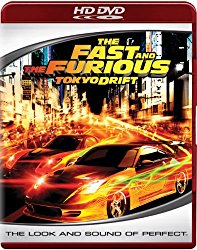Tokyo Drift
Japan Movie Reviews: The Fast and the Furious: Tokyo Drift

What is drifting?
Drifting is a worldwide automobile sport that began in Japan in the 1970's. It originated as a racing technique in the All Japan Touring Car Championships, and was pioneered by Kunimitsu Takahashi, a legendary Japanese motorcyclist and car racer. It was further developed by car racer, Keiichi Tsuchiya.
The roots of drifting
As the name suggests, drifting is a skidding technique, originally pioneered in the 1930's in the UK as "field sliding." It involves navigating a bend in such a way that the back tires skid and the car thereby "drifts" through it, preserving more speed on exiting the bend than does grip cornering.
Drifting today
Drifting has since become a sport in its own right, and cars optimally engineered for the sport have since been developed. Characteristically, it produces great clouds of smoke from tire friction, adding to its spectator value.
Drifting goes major
Drifting first caught the imagination of the world by means of a 1977 video, Plusply, depicting Tsuchiya's skills. The sport's relationship with video has continued, the most recent screen depiction of it being The Fast and the Furious: Tokyo Drift, the third installment in Fast and the Furious film series from Universal Pictures.
The Fast and the Furious
The Fast and the Furious: Tokyo Drift, released in 2006, was directed by Justin Lin, and stars Lucas Black.
The Fast and the Furious: Tokyo Drift depicts the adventures of young, troubled Sean Boswell, about to face jail for street-racing-related incidents committed in LA, so sent by his mother to live with his hard-bitten US military dad stationed in Tokyo. Once in Tokyo he discovers street racing with a Japanese twist, i.e. drifting.

His escapades lead him into the murky underworld of the yakuza, where, through drifting, he gets himself in debt to a gangster, incurs the wrath of another gangster by winning over his Japanese girlfriend, then finally, and climatically, proves himself through his drifting prowess.
Although the least successful of the first three films in the series, it nevertheless earned worldwide revenues of almost USD160 million.
The film was shot in Little Tokyo in Los Angeles, and Tokyo, Japan.
Keiichi Tsuchiya, the real-life drifting superhero, makes a cameo appearance in the movie, but not as himself.
The Fast and the Furious soundtrack
The Fast and the Furious: Tokyo Drift soundtrack CD album features 13 rap, regaetton, metal, J-pop, and hip-hop tracks from the film by acts such as the Teriyaki Boyz, Mos Def, 5,6,7, 8's, N.E.R.D., and Dragon Ash.
The Fast and the Furious movie series
The Fast and Furious has proven to be Universal Studio's biggest ever franchise with a string of sequels having been released since the the first film in the series, The Fast and the Furious of 2001. 2 Fast 2 Furious followed in 2003, then The Fast and the Furious: Tokyo Drift in 2006, Fast & Furious in 2009, Fast Five in 2011, Fast & Furious 6 in 2013, Furious 7 in 2015, and The Fate of the Furious in 2017.
Tokyo Hotels
Books on Japan & Japanese Cinema
The Fast and the Furious: Tokyo Drift movie review, read a review of The Fast and the Furious: Tokyo Drift directed by Justin Lin and produced by Samuel L. Jackson.









